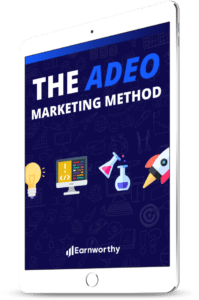What is the goal of marketing? Sell more stuff to more people, more frequently for more money. This is true for inbound marketing as well, just with a slightly different approach.
The primary goal of inbound marketing is to make it possible for potential customers to find you on their own and become not just customers but something more–your promoters, your brand evangelists.
So, as you can see, it all starts with people and specific phases of their journey as they become customers and brand evangelists. Let’s take a moment and look at that journey in greater detail.
At the start we have a stranger who may have never heard about you, your company, or brand. If you are lucky enough and use the best practices of inbound marketing, this person will eventually find your site and become a visitor who periodically explores your blog (for example) and consumes your content.
Then, one bright day this awesome visitor will go to a landing page, fill out your form and download something of value that you’re giving away. And here it is–we have a lead. Awesome!

If everything goes as planned and you put in the right amount of attention and effort, your lead will become a customer and eventually end up being a promoter of your brand.
So now that we have an idea of the bigger picture, let’s step back and look at the “lead” phase in more detail. Specifically, we will talk about leads and how businesses need to organize their inbound marketing strategy to have as many qualified leads as possible. Let’s dive in!
What is a lead?
A lead is a person who has shown some interest in your brand, company or product. For instance, he or she may have downloaded your free guide or requested a free consultation. In order to become a lead, a person needs to fill out some form where he or she provides his or her name, email address and any other information which is requested.
It’s important to understand that not all leads are equally qualified. Some are fantastic and others are just one time tire kickers or freebie hunters (nothing wrong with that), which means they just downloaded your offer and probably won’t visit your site again.
In order to better understand what we mean by saying a qualified lead, let’s look at an example. Let’s assume Julie, an imaginary woman, wants to find an estate planning attorney in her town in order to learn about what’s involved in creating a will. So what to do?
She starts searching the web, finds some local attorneys, but none of their websites have enough information about wills for Julie to make an informed decision. So, she keeps searching.

Eventually, she stumbles on a landing page for a local estate planning law firm that is not only located just minutes away, but offers a free downloadable checklist for creating a will. Julie provides her name and email address in order to gain access to the guide. Success!
And here is where an inbound marketer’s job starts. We need to determine whether Julie is a qualified lead or not. In this example, the law firm starts sending her emails with some helpful links to their latest blog posts and videos about estate planning, along with reminders that they offer free consultations by phone.
In other words, they nurture her for a month and if she continuously opens the emails, reads the blogs, and watches the videos, there is a huge possibility that she will eventually set up a consultation. That’s the perfect scenario.
If Julie lives locally, and is in fact looking for help with creating a will, then she is certainly a qualified lead. If on the other hand, she lives out-of-state and was only looking up estate planning information for a college project, she wouldn’t be qualified.
Sometimes we won’t know if a lead is qualified or not for a while. But the sooner we can find out, the sooner we will know where to place more of our lead nurturing efforts.
Conversion rate and lead nurturing: why is it important?
Your website’s conversion rate is very easy to calculate. Simply divide the total number of conversions (or leads) by the number of visitors who entered your website over a specific time range. See? I told you it was easy.
But what number do you have to obtain in order to know that your inbound marketing efforts are paying off? Maybe 1%, 10% or maybe 25%. It really depends on a number of factors, including the specific industry and market you’re in. However, if we look at the industry averages, this number equals 1-5% which in other words means that if you have 1000 visitors at least 10 to 50 of them should develop into leads.

But we’re not finished yet. Will those 10 to 50 leads eventually become your customers? Will they pick up the phone and set an appointment or put your product in their cart and make a purchase? I am really sorry to say this but, no! You definitely won’t close all of your leads into customers, but what you can do is attempt to make your conversion rate as high as possible. Here is where lead nurturing comes into the play.
Lead nurturing is the process businesses use to develop better relationships with their potential customers. That includes listening to their pain points and problems, trying to solve their issues, and more importantly, continuously finding solutions and providing answers. This can be easily done by leveraging email marketing campaigns among other tactics.
So don’t just think of having a high conversion rate, but go deeper: customers and promoters is the thing we should be aiming for.
Summary
Now we have some understanding of what a lead is within the inbound marketing methodology, why qualified leads are important, and how to nurture a lead into a customer.
As a final thought, keep in mind that though generating as many leads as possible is very important, making each lead fall in love with your brand is even more important. They are the ones who will bring their friends, family members and others to your website and eventually help you grow your business for free!
And speaking about bringing others, if you received any value at all out of this article, please be sure to share it. Thanks for reading and happy marketing!
Image credits:





